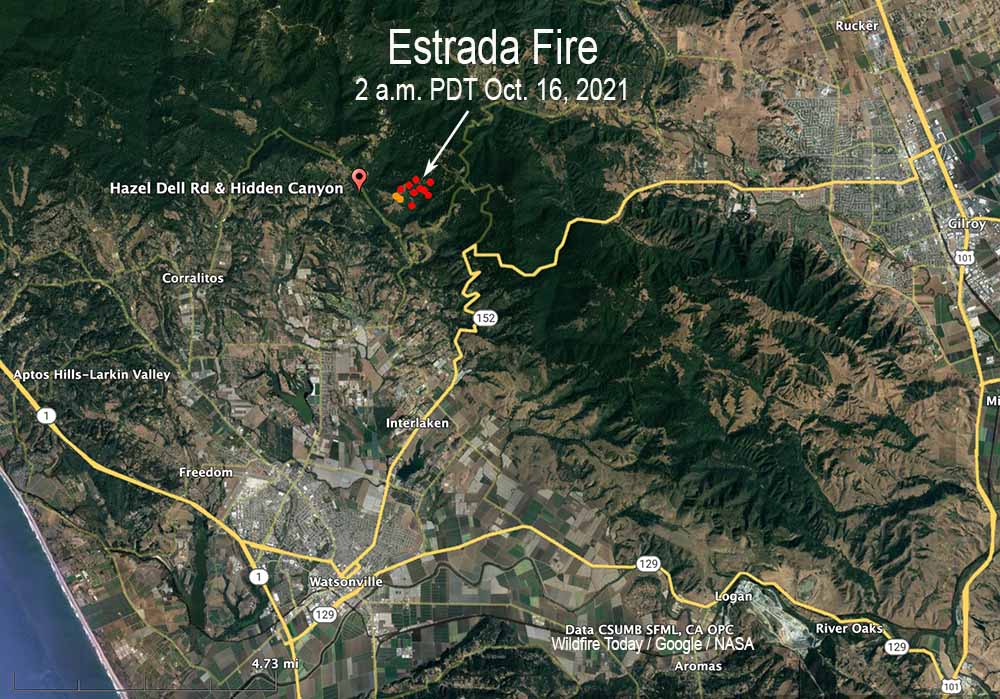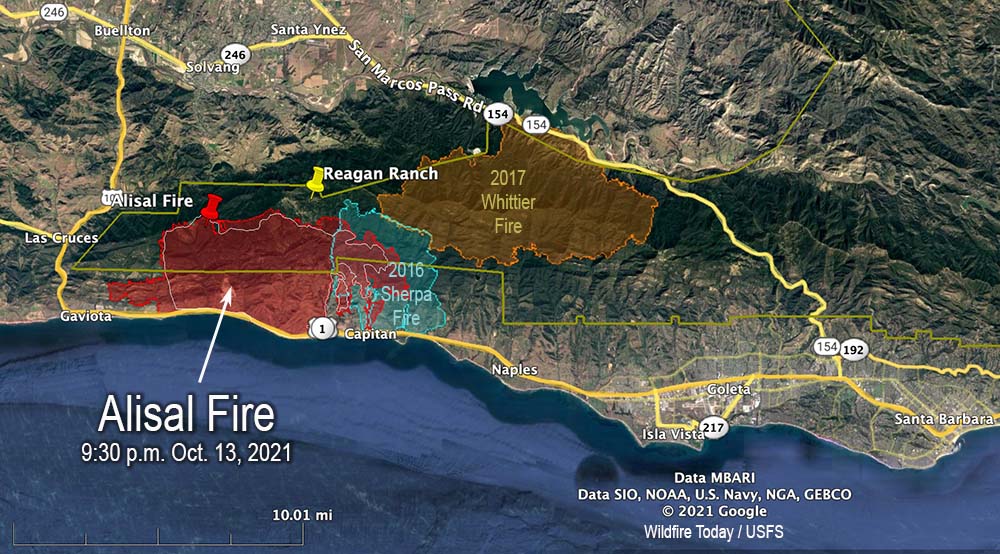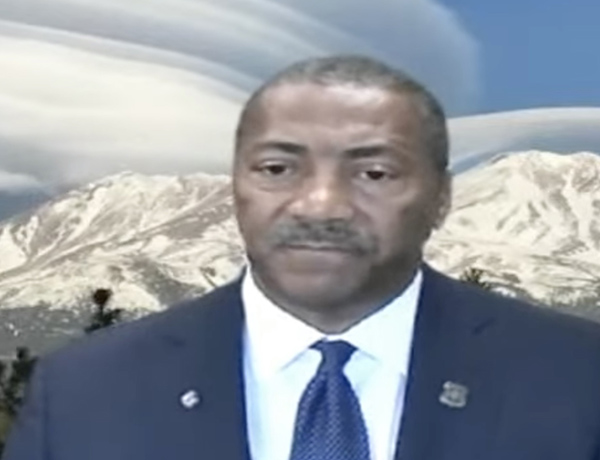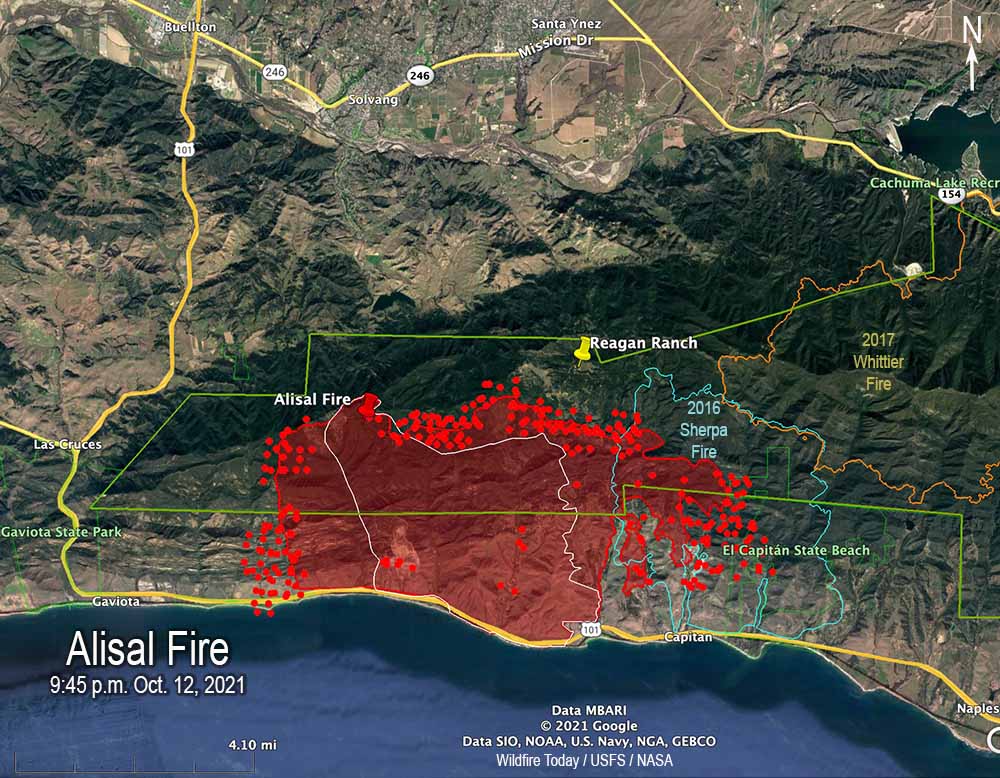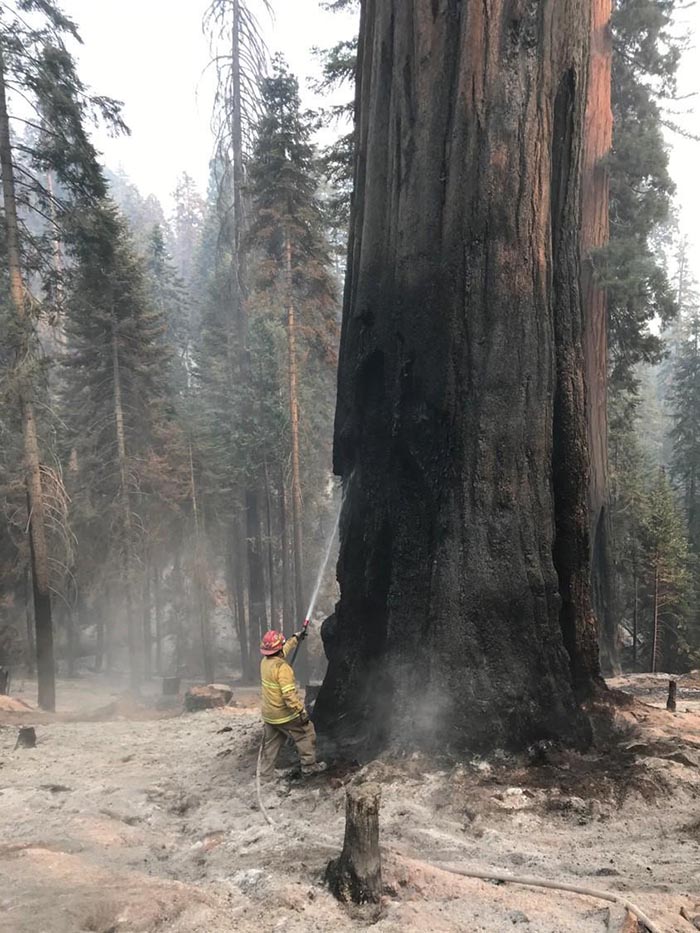
In 2020, 10 to 14 percent of all giant sequoias across the tree’s natural range in the Sierra Nevada that were at least four feet diameter were killed in the Castle Fire when a substantial proportion of all sequoia groves touched by the fire burned with unprecedented severity.
There are two fires currently burning which are destroying more of these iconic beasts of trees, the KNP Complex just north of the Castle Fire, and the Windy Fire which has spread into the south side of the Castle Fire. These three fires were primarily in the Sequoia and Kings Canyon National Parks and the Sequoia National Forest.
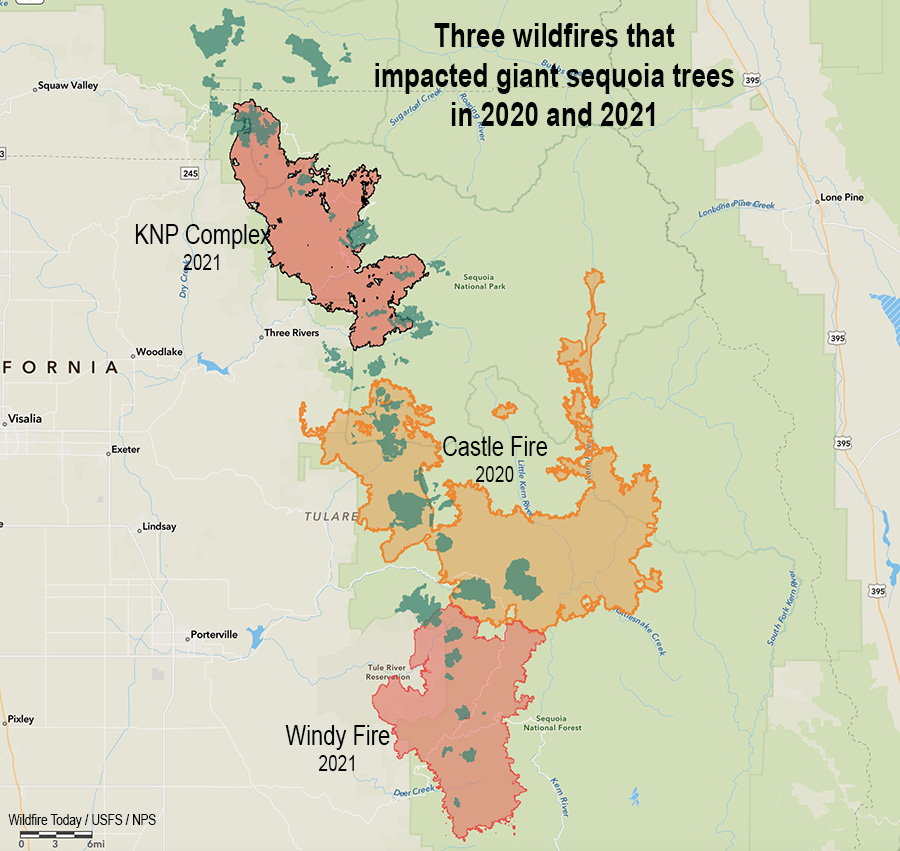
According to a very preliminary estimate by the KNP Complex incident management team which was later removed from Facebook, “hundreds” of the iconic trees may have been killed in one day, October 4, in the Redwood Mountain Grove, the largest giant sequoia grove on Earth.
Under normal conditions giant sequoia trees can live for more than 3,000 years, which is 38 times the life expectancy of a human in the United States. The multi-year drought and higher temperatures have led to extremely dry fuel moistures which is causing wildfires in California and other areas to burn with unusual intensity, making even some of the giant sequoias with bark up to a foot thick susceptible to wildfires burning under these conditions.

It will take a few years for the final death toll to be determined in the Castle Fire, but a report released June 25, 2021 estimating the mortality found that areas which burned with high intensity, which was 30 percent of the Castle Fire grove areas, killed many giant sequoias. Below are the mortality and survival numbers from the report for the Alder Creek Grove, which shows 97.3 percent mortality in high fire severity areas, and 55.1 percent in moderate severity locations.

The early data for the 2020 Castle Fire translates to an estimated loss of 7,500 to 10,600 large sequoias (those with trunk diameters of four feet or more).
It could be many months or up to a year before a complete inventory determines the additional giant sequoia mortality from the fires in 2021, the Windy Fire and KNP Complex.
On October 12 the US Forest Service reported that in the Windy Fire all but four mature giant sequoias were killed in one of the smaller groves, Starvation Creek, which according to earlier information had about 30 mature sequoias. Three other groves, the FS said, had less severe damage, and four still have not been evaluated and may not be until Spring or Summer of 2022. This information only applies to the Sequoia National Forest and Giant Sequoia National Monument, and does not include the Sequoia and Kings Canyon National Parks and the KNP Complex.
Probably millions of trees are killed every year in wildfires. Should we care that 10,000 or so extremely large ones were wiped out in 2020, with trunk diameters that exceed 20 feet, that can be more than 300 feet in height and live more than 3,000 years?
These big trees are a link with our past. They represent the fact that some living things can thrive for a very long time if no one comes along to totally screw things up.
What can be done?
Fix the climate? It won’t happen quickly. The reality is that even if all of the industrialized nations overnight adopted climate-friendly policies and practices, it could be decades before CO2 and other climate gasses would decrease to the point where the climate would begin to return to pre-1850 conditions.
Harden the giant sequoia groves? Reducing the ground and ladder fuels beneath the huge trees can make them more resistant to fire. The Sequoia and Kings Canyon National Parks have been treating many of the groves with prescribed fire since the 1960s. The Sequoia National Forest also has an active prescribed fire program. But the federal agencies have not had the funding and personnel to conduct thinning and prescribed fire projects in all of the groves. And California air quality regulations and residents who complain about smoke from prescribed fires restrict the windows for when the burns can take place.
Rethink the way limited firefighting resources are allocated to going fires? In a September 23, 2021 public briefing, one of the Operations Section Chiefs on these fires explained that he did not have enough hand crews and other resources to be able to work on all of the high priority areas on his fire at the same time, and was forced to shift them around based on fire activity. It sounded like Whack-A-Mole. This was due at least in part to the numerous ongoing fires, which were competing for the same resources. Other fires had similar shortages and unfilled resource orders.
We asked Rebecca Paterson, a Public Affairs Specialist for Sequoia and Kings Canyon National Parks, if all of the resource requests or orders placed by the incident management team had been filled would there have been less giant sequoia mortality?
“It would be impossible for us to determine what could have been and we do not want to speculate,” Ms. Paterson replied.
The role of Multi-Agency Coordinating Groups in allocating scarce firefighting resources
We also asked Ms Paterson, “Beyond placing resource requests and orders, was anything else done in an attempt to procure additional resources? Such as conversations by high-ranking NPS and USFS personnel with regional and national level entities or the National Multi-Agency Coordinating Group (NMAC)?”
Ms. Paterson: “The NPS representative to the National Multiagency Coordinating Group was aware of the competing resource needs across multiple geographic areas during Preparedness Level 4 and had daily contact with the Southern California Geographic Area as their NMAC liaison. NMAC makes resource allocations to geographic areas not specific incidents. The geographic areas then assign resources to incidents. We do not know what conversations may have occurred within the United States Forest Service.”
The Operating Plan for the NMAC sets the priorities for the group when allocating resources:
- Protection of human life.
- Maintain initial attack capability.
- Protect communities and community infrastructure, other property and improvements, and natural and cultural resources.
The 2021 Multi-Agency Coordination System Procedure Guide for FIRESCOPE California uses a point system for establishing priorities for resource allocation among incidents. The maximum score is 60 for each fire. Only up to 5 points can be attributed to “Natural Resources (Threatened and Endangered Species Habitat, Watershed, Forest Health, Soils, Air Shed, etc.).” Up to 15 points can be assigned to structures and infrastructure.
It is probably safe to assume that when multiple large fires are burning most of the priorities for allocating scarce resources are decided by individuals with a history of on the ground firefighting. They may or may not have a bias toward assigning fire personnel to protect buildings, rather than fires where 3,000-year old trees 300 feet tall and 20 feet in diameter are being destroyed.
Today, the last giant sequoias on Earth live on land the size of Cleveland (48,000 acres) in about 73 groves scattered along the western slopes of the Sierra Nevada. The northernmost grow in Placer County in Tahoe National Forest, and the southernmost groves are in Giant Sequoia National Monument. They need a great amount of water and depend on the Sierra snowpack that accumulates over the winter months and soaks into the ground when it melts. Years of drought, declining snowpack, and increasingly intense wildfires are putting the species at greater risk.
If these massive plants were able to already live for thousands of years, it is irresponsible to not ramp up our efforts to protect them when human-caused climate change is suddenly leading to the destruction of large segments of their populations, 10 to 14 percent last year alone.
As we get deeper into the bowels of climate change it is going to be increasingly difficult to maintain the status of all living things on the planet, except for cockroaches, Keith Richards, and Clint Eastwood.
The Bottom Line
Since only approximately 100,000 of these mammoth trees are left that are larger than four feet in diameter, government employees allocating firefighting resources need to strongly consider their value to the nation and the world, and that some of them have been living for thousands of years. It is disheartening to see hundreds of them destroyed in a matter of hours, especially if due in part to sending resources, instead, to in some cases protect structures that have not been hardened to FireSafe standards or constructed under reasonable county and city building codes.
We need to continue to manage the fuels beneath these big trees, and redouble the prescribed fire programs around them that began in the 1960s. Congress and the President need to increase the fuel management funding for Sequoia and Kings Canyon National Parks, Sequoia National Forest, and Giant Sequoia National Monument to make this possible.


